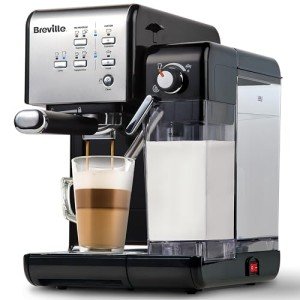15 Things You've Never Known About Stainless Steel Espresso Machines

The Art of Italian Espresso Machines: A Brewed Tradition
Italian espresso machines are not simply home appliances; they are an integral part of Italy's rich coffee culture, representing a blend of artistry, engineering, and design. Coffee connoisseurs worldwide acknowledge the significance of high-quality espresso, a staple of Italian life and food. Espresso Machine Reviews out the history, mechanics, types, and elements to consider when buying an Italian espresso machine, showing the depth of this cherished drink and its developing approaches.
History of Espresso Machines
The espresso machine's evolution dates back to the early 20th century in Italy, where coffee was not merely a drink but an essential social ritual. The initial attempts to brew espresso started with simple, stove-top models, slowly progressing into complex machines that could duplicate the perfect brew.
- 1901-- The First Espresso Machine: The very first steam-powered espresso machine, referred to as the "Ideale," was developed by Luigi Bezzera. This equipment marked a turning point in espresso developing.
- 1938-- The Lever Machine: The introduction of the lever machine made it easier to control the pressure utilized in espresso extraction, enhancing flavor consistency.
- 1947-- The Automatic Machine: Reaching more consumers, Gaggia released the very first automatic espresso machine, additional promoting espresso bars.
- 2007-- The Digital Age: Technological advancements caused the birth of totally programmable machines, permitting users to personalize their developing settings to attain a personalized coffee experience.
Secret Features of Italian Espresso Machines
Italian espresso machines embody precision, workmanship, and development. Here are some essential parts that highlight their significance:
| Feature | Description |
|---|---|
| Boiler Type | Determines how heat is generated and kept. Common types consist of single boiler, dual boiler, and heat exchanger. |
| Group Heads | Where the coffee is brewed; commercial machines often have several group heads for performance. |
| Pressure Control | Important for accomplishing the best espresso; most machines operate at 9 bars of pressure. |
| Frothing Capabilities | The steam wand enables milk frothing, important for drinks like cappuccino and latte. |
| Build Quality | The materials utilized (stainless-steel, brass, etc) impact toughness and heat retention. |
Kinds Of Italian Espresso Machines
Choosing the best machine hinges on user choices, budget, and meant use. Below are the primary types of Italian espresso machines:
Manual Espresso Machines
- Pros: Offer full control over the brewing procedure, permitting for an individualized touch.
- Cons: Require skill and practice, can be labor-intensive.
Semi-Automatic Machines
- Pros: Provide a balance between automatic and manual processes; users control water flow.
- Cons: Can have a steeper learning curve than totally automatic machines.
Fully Automatic Machines
- Pros: Simplify the developing process with push-button operations; perfect for newbies.
- Cons: May compromise some of the nuances of manual brewing.
Super-Automatic Machines
- Pros: Grind, tamp, brew, and froth instantly; hassle-free for hectic lifestyles.
- Cons: Less control over the developing variables, capacity for a less genuine espresso experience.
Purchasing Guide: Factors to Consider
Picking the ideal Italian espresso machine can be challenging, but considering the following elements can simplify the decision-making process:
- Budget: Italian espresso machines vary from affordable to high-end models, so set a budget upfront.
- Use Frequency: Evaluate how often you will use the machine; day-to-day users may want a more long lasting choice.
- Area: Measure your kitchen or counter space; some machines can be big and need enough clearance.
- Upkeep: Consider ease of cleaning; machines with detachable parts or integrated cleaning features may lower maintenance.
- User Skill Level: Beginners may prefer totally or semi-automatic machines, while knowledgeable baristas can manage manual machines.
- Brand Reputation: Research brand names known for quality, such as Breville, Gaggia, and La Marzocco.
Popular Italian Espresso Machine Brands
Italian workmanship is renowned for producing some of the very best espresso machines worldwide. Here are top brand names worth considering:
- Gaggia: Known for its home espresso machines and affordability.
- La Marzocco: A premium brand name known for its commercial-grade machines and innovative innovation.
- Rancilio: Renowned for its resilient construct and professional-quality machines appropriate for home and commercial use.
- Sage/Breville: Offers advanced features and easy to use styles, ideal for both amateurs and lovers.
Frequently asked questions
What is the distinction between espresso and regular coffee?
Espresso is a concentrated coffee brewed by requiring hot water through finely-ground coffee under pressure. It has a thicker consistency, richer taste, and higher caffeine concentration than routine coffee.
Can I make milk-based beverages with an espresso machine?
Yes, numerous Italian espresso machines feature a steam wand to froth milk for drinks like coffees, lattes, and macchiatos.
How frequently should I clean my espresso machine?
Routine maintenance is vital. Generally, an extensive cleaning is recommended every couple of weeks, while descaling needs to be done every 1 to 3 months, depending upon water hardness.
What is the ideal pressure for brewing espresso?
The perfect pressure for brewing espresso is around 9 bars. This pressure makes sure the ideal extraction of flavors from the coffee grounds.
Are more pricey machines worth the investment?
Higher-end machines typically make use of much better materials and technology, providing improved resilience and more constant results. For major coffee fans, purchasing a great machine can elevate the espresso experience substantially.
Italian espresso machines are far more than simple brewing gadgets; they are a celebration of a cultural custom that has actually affected coffee intake worldwide. With numerous designs offered to fit any user's needs-- varying from novices to experienced baristas-- there is an Italian espresso machine perfectly matched for everybody. As you start your espresso journey, comprehending the history, mechanics, and options will improve your experience and gratitude for this time-honored drink. Whether you seek to recreate a café atmosphere in the house or fine-tune your developing strategy, these machines are capable of delivering memorable cups of espresso adorned with the abundant history of Italian coffee culture.

